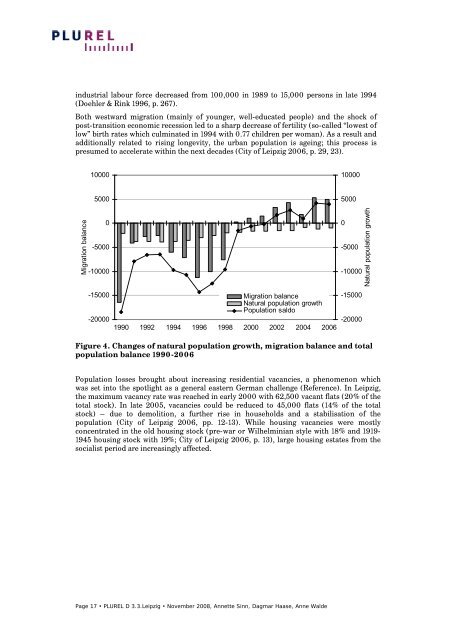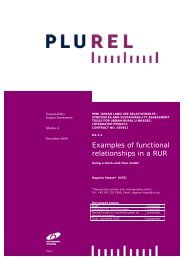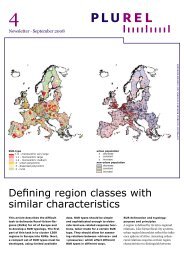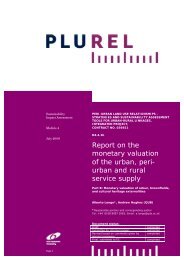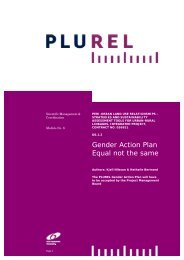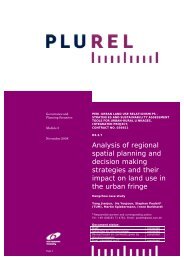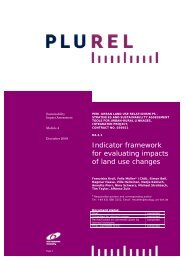Analysis of regional spatial planning and decision making ... - Plurel
Analysis of regional spatial planning and decision making ... - Plurel
Analysis of regional spatial planning and decision making ... - Plurel
You also want an ePaper? Increase the reach of your titles
YUMPU automatically turns print PDFs into web optimized ePapers that Google loves.
industrial labour force decreased from 100,000 in 1989 to 15,000 persons in late 1994<br />
(Doehler & Rink 1996, p. 267).<br />
Both westward migration (mainly <strong>of</strong> younger, well-educated people) <strong>and</strong> the shock <strong>of</strong><br />
post-transition economic recession led to a sharp decrease <strong>of</strong> fertility (so-called “lowest <strong>of</strong><br />
low” birth rates which culminated in 1994 with 0.77 children per woman). As a result <strong>and</strong><br />
additionally related to rising longevity, the urban population is ageing; this process is<br />
presumed to accelerate within the next decades (City <strong>of</strong> Leipzig 2006, p. 29, 23).<br />
10000<br />
10000<br />
Migration balance<br />
5000<br />
0<br />
-5000<br />
-10000<br />
-15000<br />
-20000<br />
Migration balance<br />
Natural population growth<br />
Population saldo<br />
1990 1992 1994 1996 1998 2000 2002 2004 2006<br />
5000<br />
0<br />
-5000<br />
-10000<br />
-15000<br />
-20000<br />
Natural population growth<br />
Figure 4. Changes <strong>of</strong> natural population growth, migration balance <strong>and</strong> total<br />
population balance 1990-2006<br />
Population losses brought about increasing residential vacancies, a phenomenon which<br />
was set into the spotlight as a general eastern German challenge (Reference). In Leipzig,<br />
the maximum vacancy rate was reached in early 2000 with 62,500 vacant flats (20% <strong>of</strong> the<br />
total stock). In late 2005, vacancies could be reduced to 45,000 flats (14% <strong>of</strong> the total<br />
stock) – due to demolition, a further rise in households <strong>and</strong> a stabilisation <strong>of</strong> the<br />
population (City <strong>of</strong> Leipzig 2006, pp. 12-13). While housing vacancies were mostly<br />
concentrated in the old housing stock (pre-war or Wilhelminian style with 18% <strong>and</strong> 1919-<br />
1945 housing stock with 19%; City <strong>of</strong> Leipzig 2006, p. 13), large housing estates from the<br />
socialist period are increasingly affected.<br />
Page 17 • PLUREL D 3.3.Leipzig • November 2008, Annette Sinn, Dagmar Haase, Anne Walde


